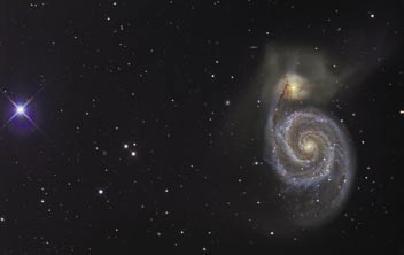Early in the morning, Mercury will approach our line of sight south of the moon
Tammy Plotner and Jeff Barber, Universe Today

Early in the morning, Mercury will approach our line of sight south of the moon.
On this date in 1920, the debate between Shaffley and Curtis about the nature and distances of the spiral nebulae began. Shapley claimed that they are all part of one huge galaxy - the Milky Way, while Curtis claimed that these are distant galaxies. 13 years later, on the same day, Arno Panzias was born - a Nobel laureate for his part in the discovery of the cosmic background radiation using a home-made antenna. The discovery helped to further understand cosmology in ways that Epley and Curtis never dreamed of.
In 1850, Lord Rose used the 72-inch (about 2 meters) Lewiston telescope at Prestown in Beercastle, Ireland, to catalog 14 undeciphered spiral nebulae. The first observed was a product of Monsieur's research, which was discovered on the night of October 13, 1773 when he was following a comet. discovery, M51 had to wait another 72 years until a large telescope revealed its spiral nature. It took another 75 years for the nature of this nebula to be decided beyond dispute.
The M51 galaxy can be viewed from any medium or higher telescope and is seen as the Vortex Nebula or the "Great Spiral". Tonight we can watch it ourselves. You should start with the Ursa Major group focusing on the stars Mizar (Zeta) and Alkaid (Eta), then rotate the line between them 90 degrees south using Eta as the focus. When the line is pointing southwest, cut it in half. In good conditions and a medium or higher telescope one can wonder about the mystery of the nebula, only with powerful telescopes and with the help of long exposure photography can one separate its individual stars.
Universe Today website
